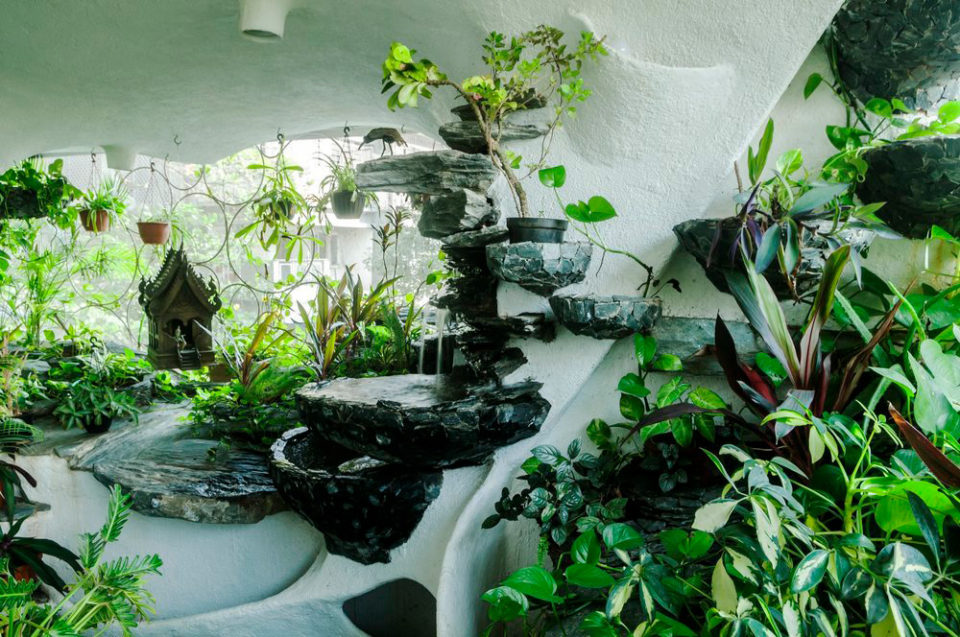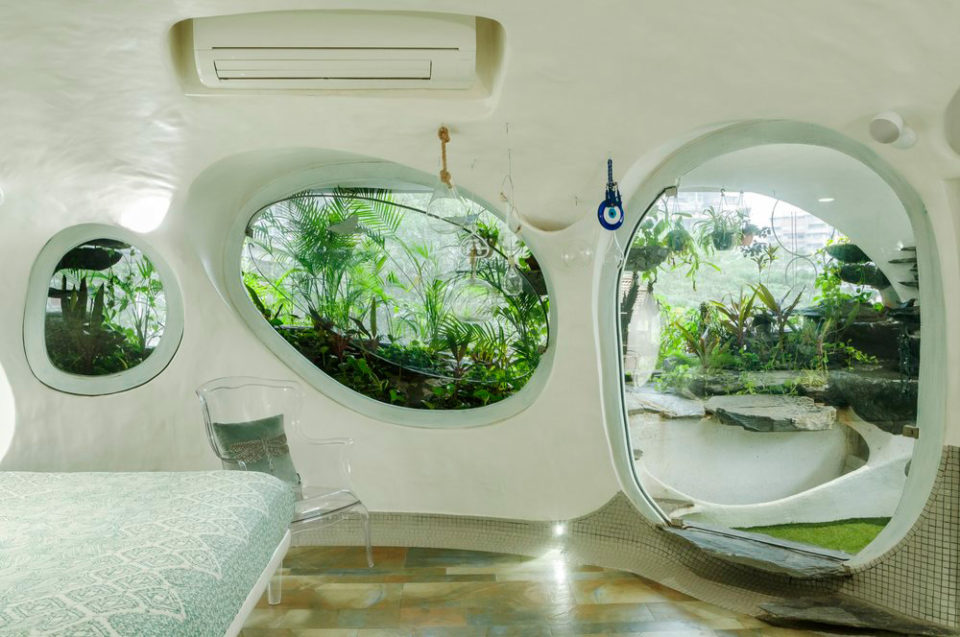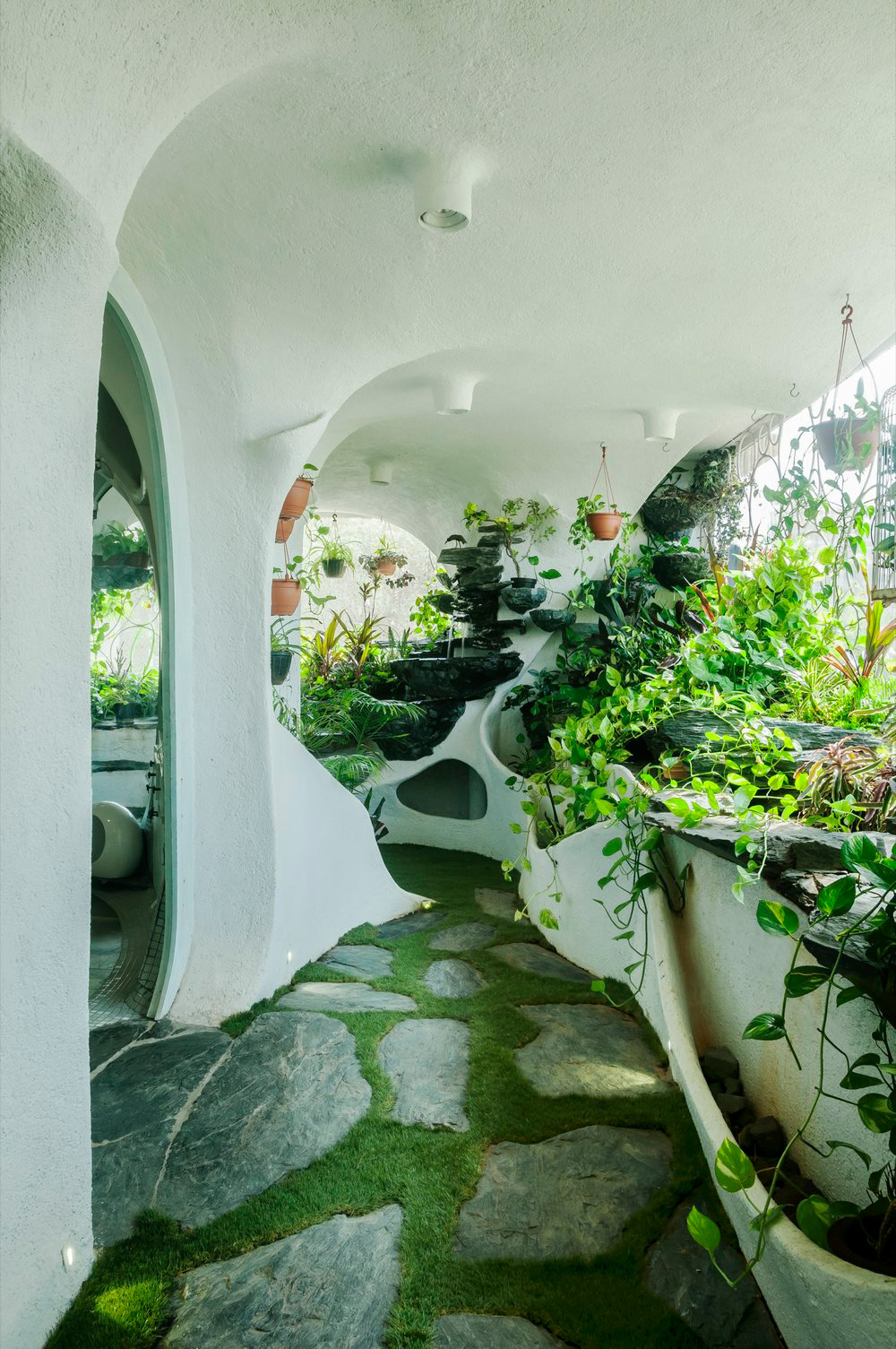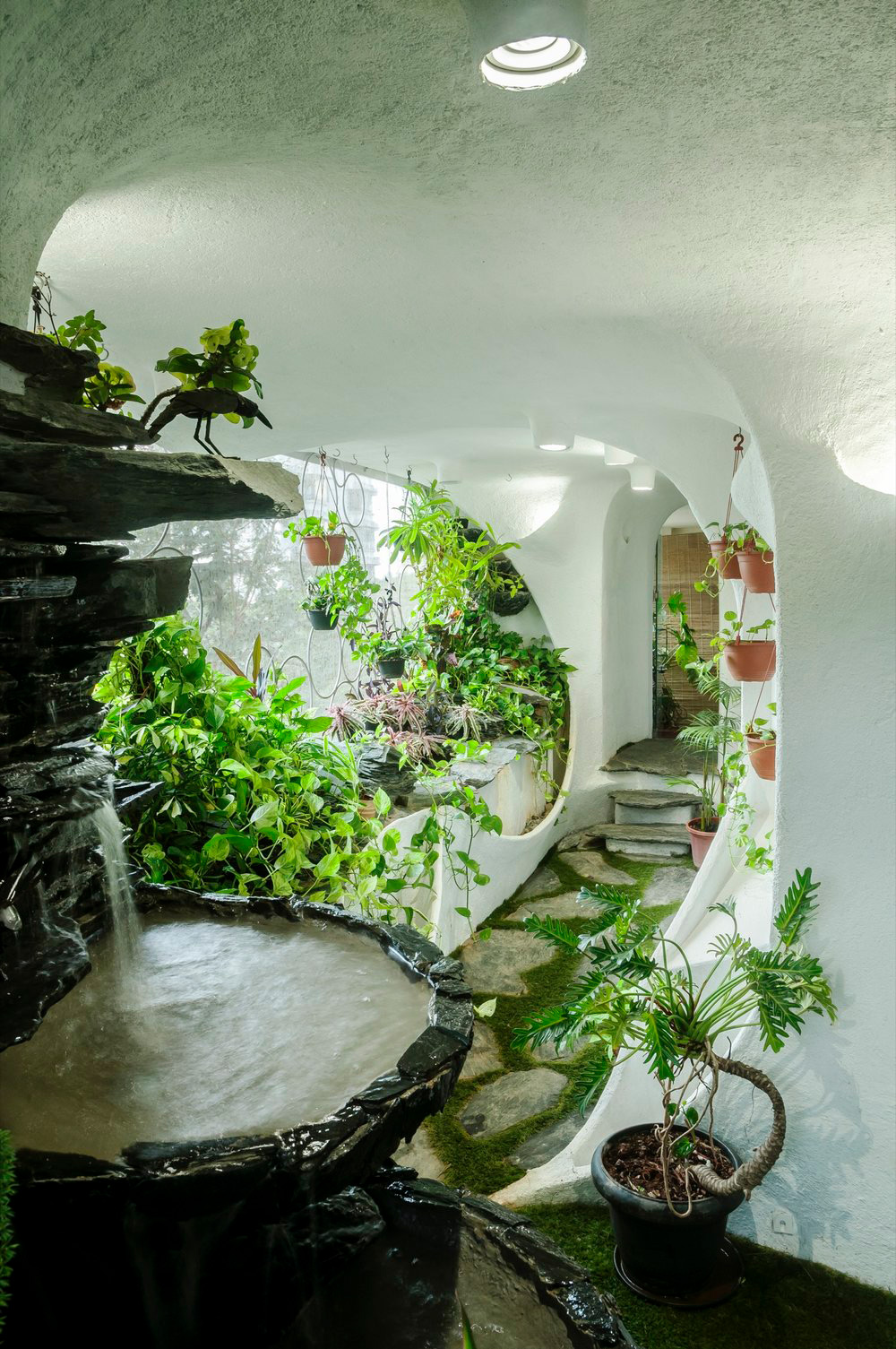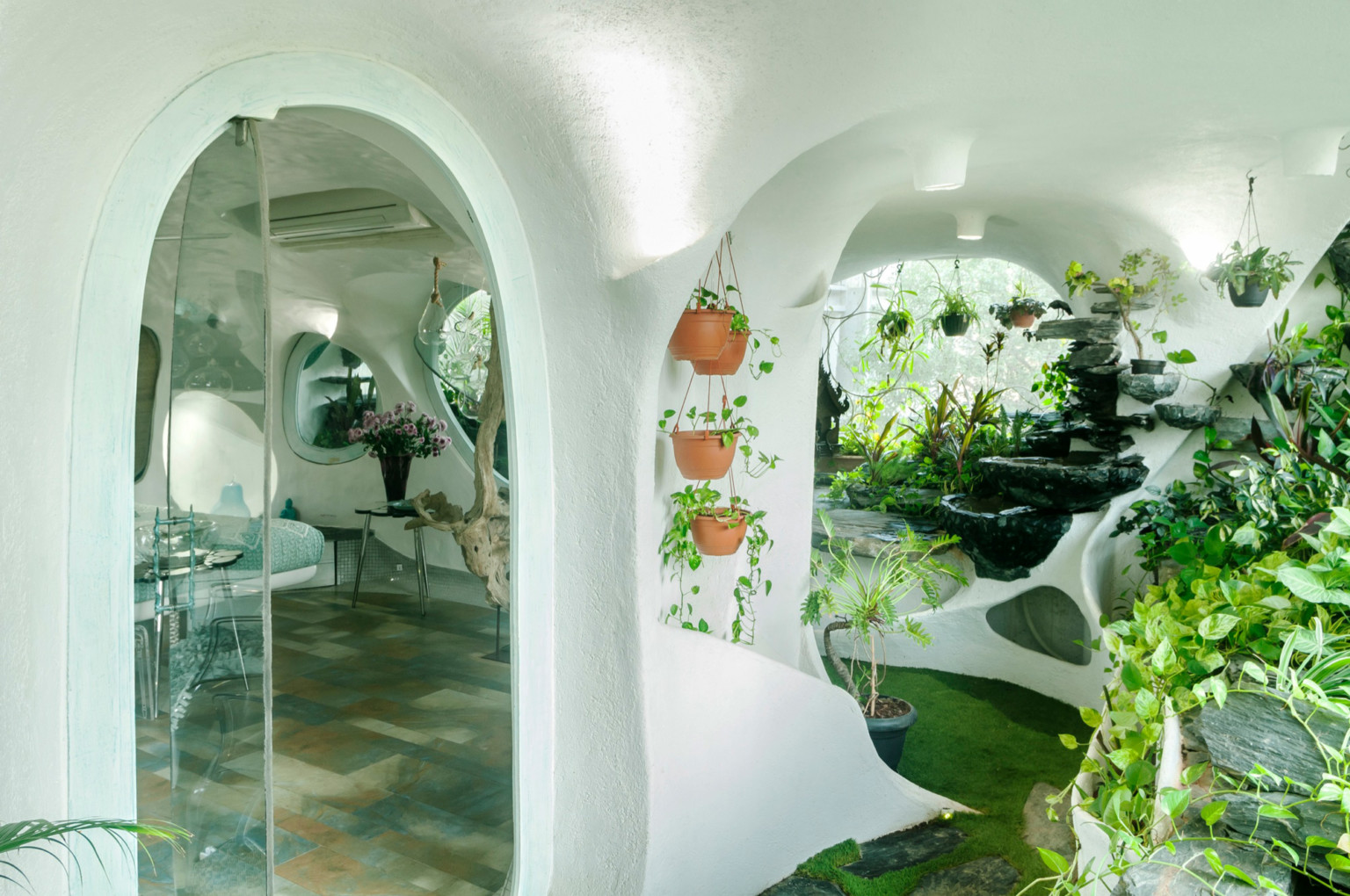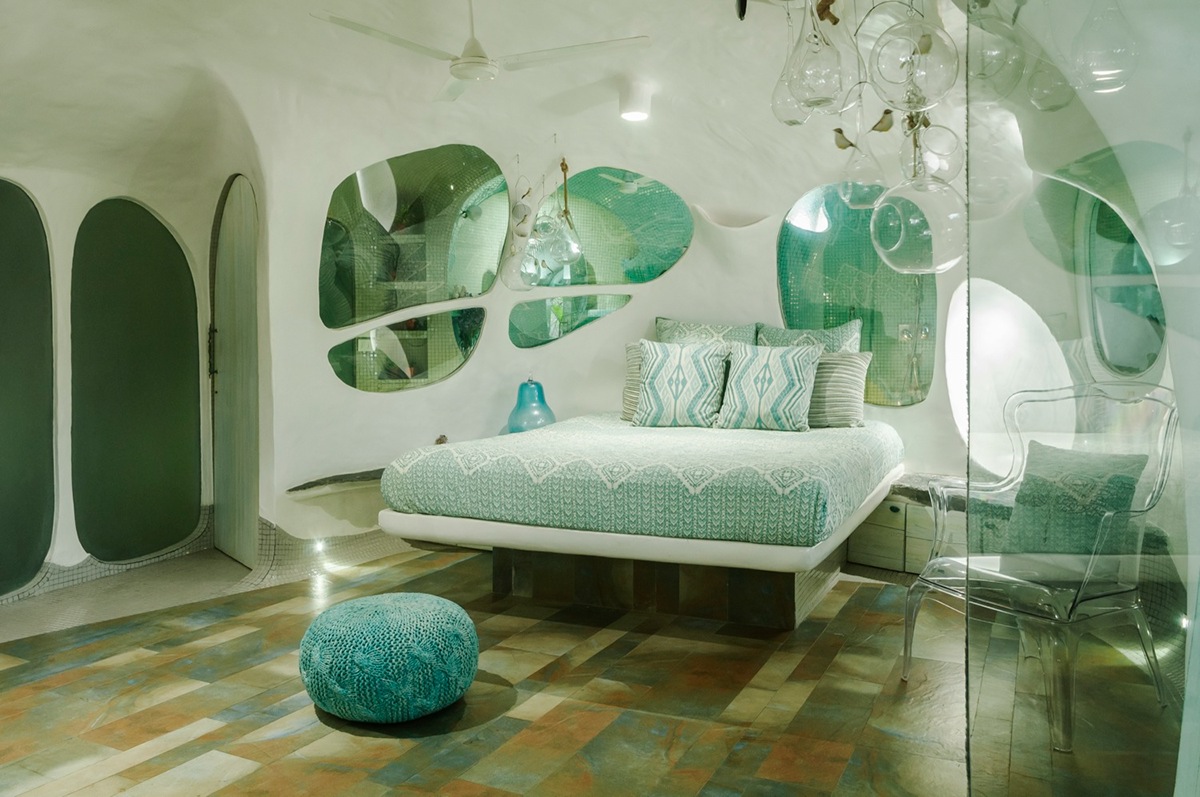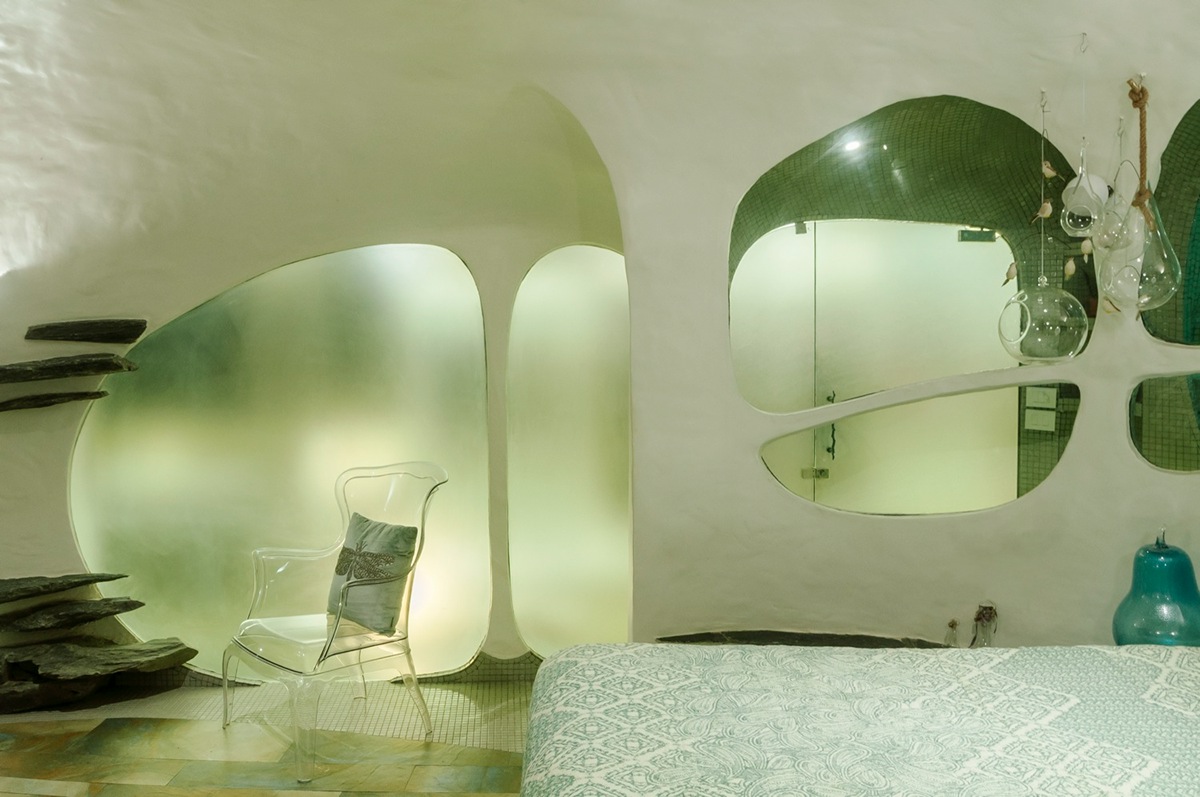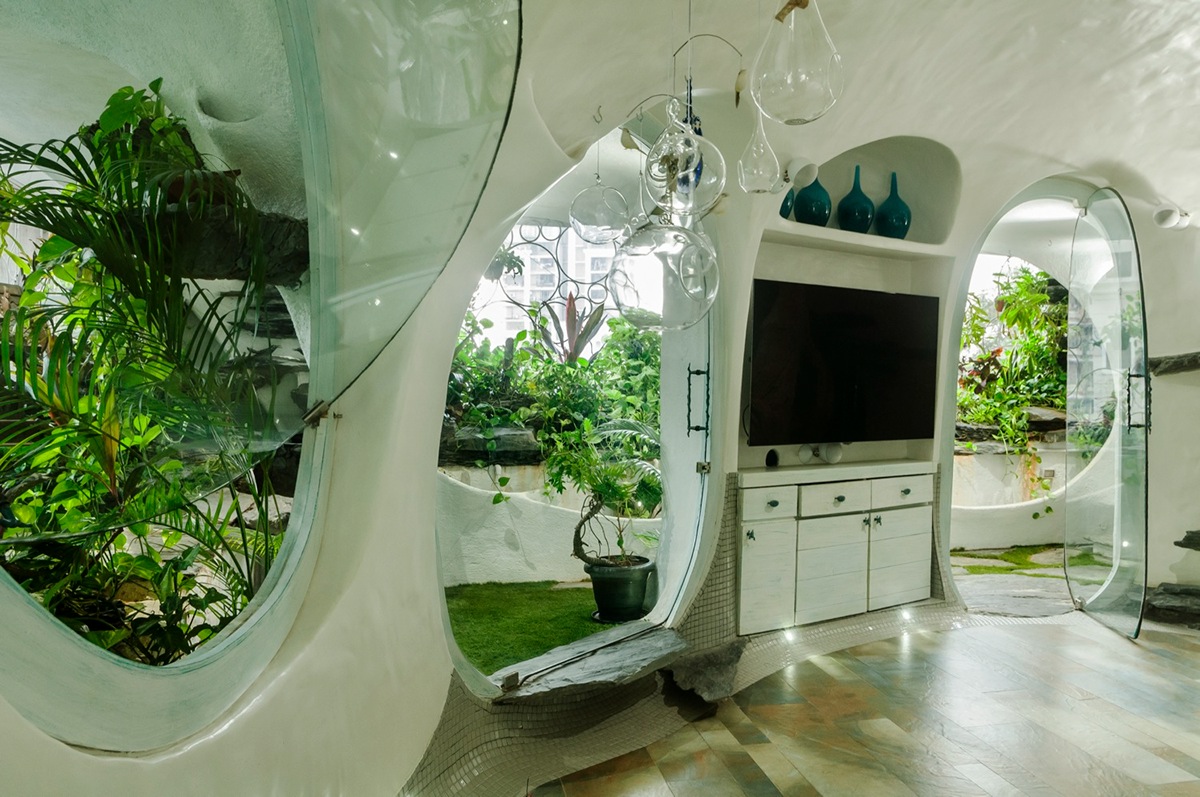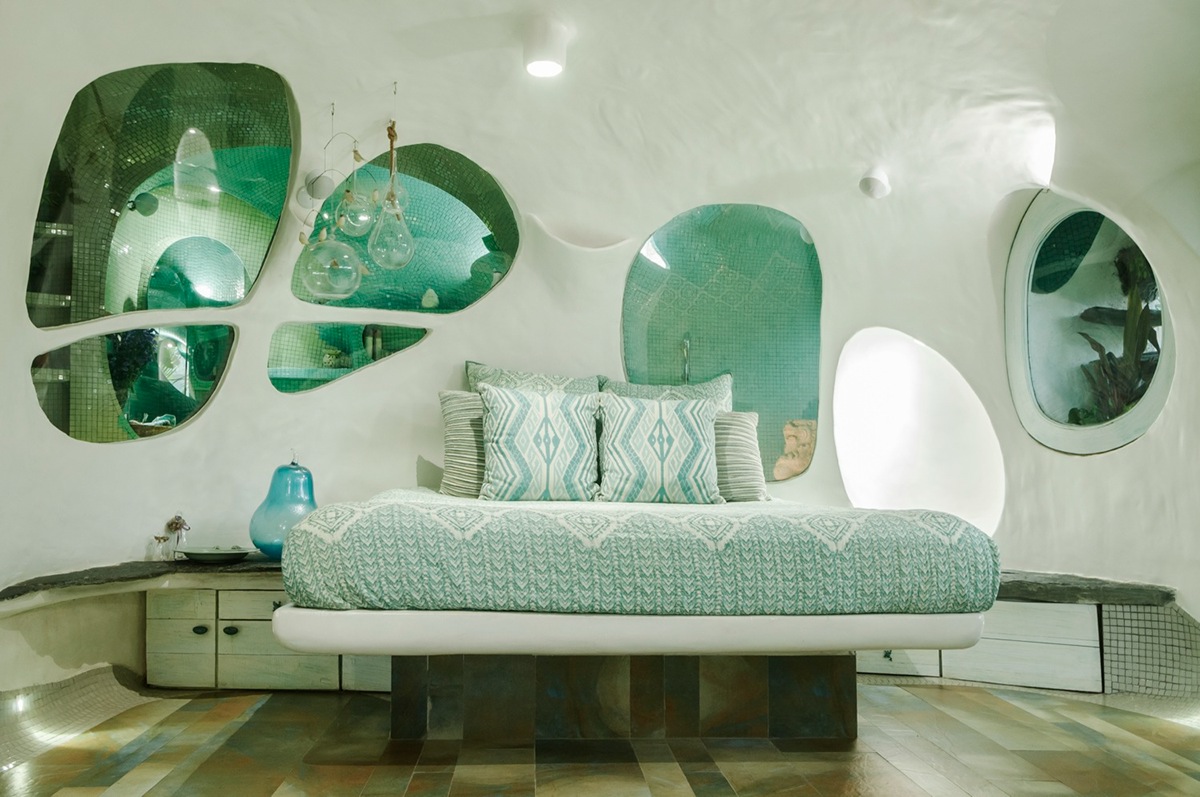Just looking at the photos of these interiors, where would you guess this unusual verdant living space is located? The English countryside, maybe, or a rural land project full of experimental buildings made of natural materials? An apartment building in one of the world’s most heavily populated cities probably wouldn’t be the first thing that comes to mind, but that’s exactly where “Garden Room” is set, testifying to the transformative skills of India-based architectural studio The White Room.
Known for their propensity to experiment with organic forms and materials, even within urban settings, The White Room creates the feeling of a secret oasis in this unusual project. Sculptural in form, the space features lots of round windows, arches and hollows, with nary a straight line in sight.
Designed for “a flamboyant couple,” the “organically designed spaces seamlessly flow into each other, thinning the boundaries and bringing nature closer to the living,” explain architects Nitin Barchha and Disney Davis. “Thes paces take on a sculptural form with some wrapped in turquoise mosaic, some in mediterranean whites, while others in slate and green.”
The result feels more like a garden than an indoor living space, complete with stepping stones set into carpets of living grass. Plants are virtually everywhere you look, water cascades through multiple fountains and custom glass doors maintain views of the lush green spaces and allow natural light to penetrate the innermost rooms, like the bedroom and the incredible aqua-tiled bathroom.
“The White Room studio is built on the basic principles of exploring the bare beauty of materials. Here the focus has always been on exploring innovative ways of approaching fundamental problems of space, proportion, light and materials. The way in which a wall meets a floor, or how a door fits into a wall, flush or proud, are not mere details, they are as much architecture as the planning of a sequence of rooms in a gallery, or the composition of a facade.We consider architecture, of all the arts, as the one that most depends for its expressive power on rubbing up against the gritty constraints of every day life.”
